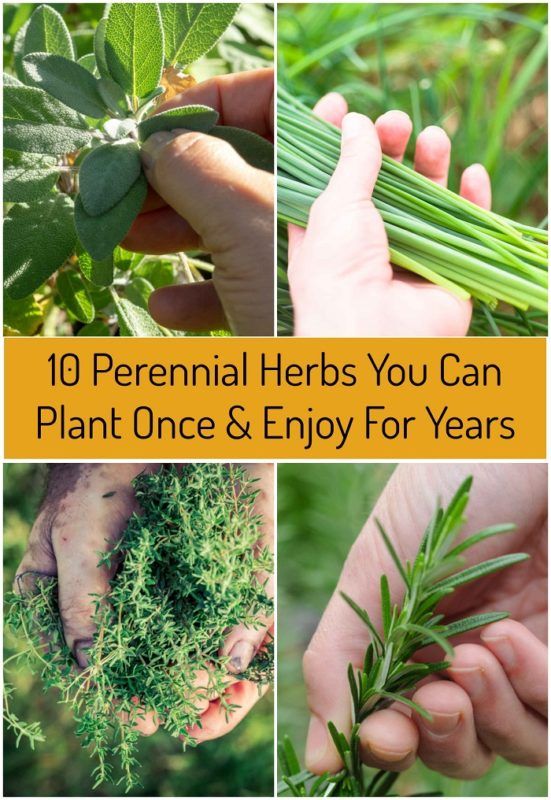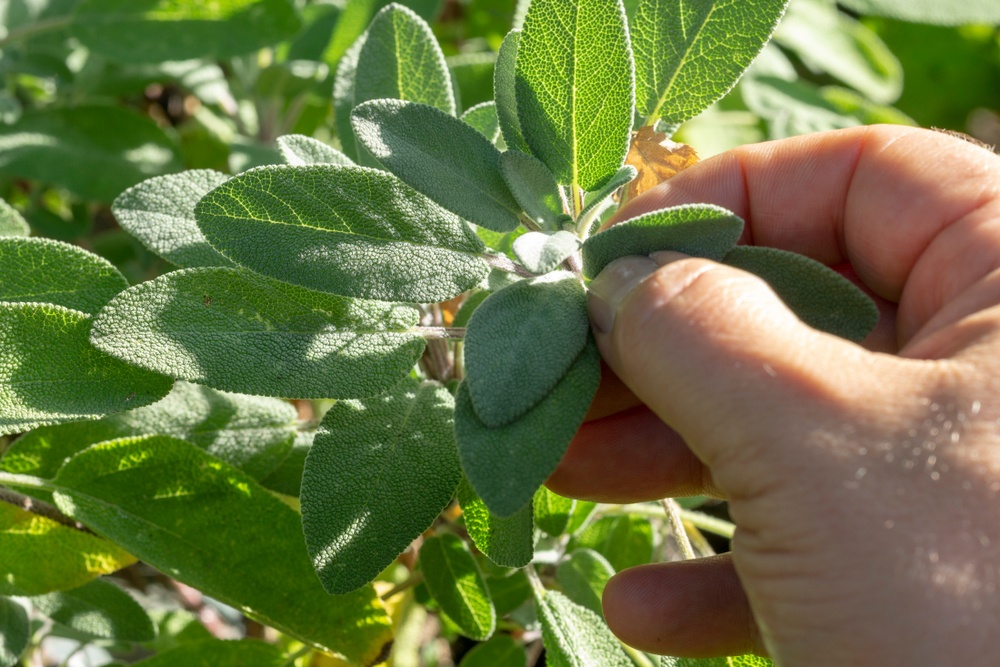
Perennial herbs are an excellent way to keep up your supply of fresh herbs without having to spend tons of money and time cultivating new plants every season.
With proper care and cultivation, these ten hassle-free herbs will flourish for years to come.
1. Lavender
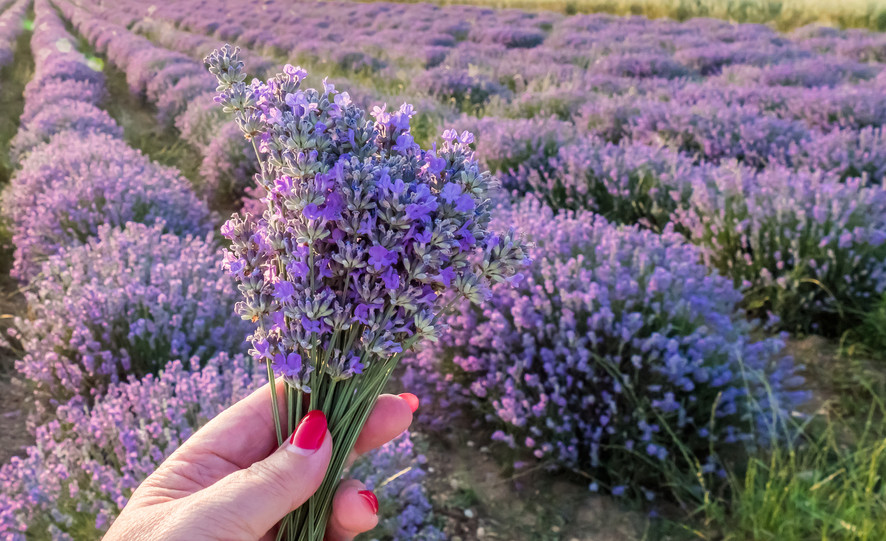
Growing tips:
Plant lavender in full sun in well-draining soil. It doesn’t like to be kept overly moist so be sure to let the soil dry out before watering deeply.
Harvesting:
It is best to harvest lavender once buds have formed but before the flowers are fully open. This will allow you to reap optimal color and fragrance from your plants.
Grab a large bunch of lavender stalks near the base and cut with sharp shears. Tie the bundle together and hang upside down in a warm-dry place that is out of direct sunlight.
After about 2-4 weeks the lavender is ready to be used. Gently shake off blossoms and leaves into an airtight jar.
Uses:
- Fresh or dried lavender can be used as a vibrant and delicious garnish on a number of dishes including homemade ice cream, bread, and salad.
- Make sachets of dried lavender out of breathable fabric and place under your pillow to enhance sleep quality.
- Mix lavender, peppermint essential oil and water in a spray bottle for a freshening room spray.
- Here are some more brilliant uses for lavender.
2. Cilantro

Growing tips:
Plant cilantro in full sun in well-drained, moist soil. You want to make sure to maximize foliage growth so pinch about an inch off the top of your young cilantro plants to prevent bolting and premature seed development.
Harvesting:
Unlike lavender, cilantro is not desirable once dried and almost immediately begins to lose flavor after it is harvested.
Throughout the growing season, snip the new growth from the top of the plant and use right away.
Uses:
- Fresh cilantro is wonderful in many types of salsa. Try making mango salsa to mix things up a little.
- Combine cilantro, butter, and lemon juice for a delicious cilantro butter to use as a flavorful addition to cooked vegetables.
- Place a few stems of cilantro in your bottle of olive oil to create a delicious infusion for meats or salads.
3. Oregano
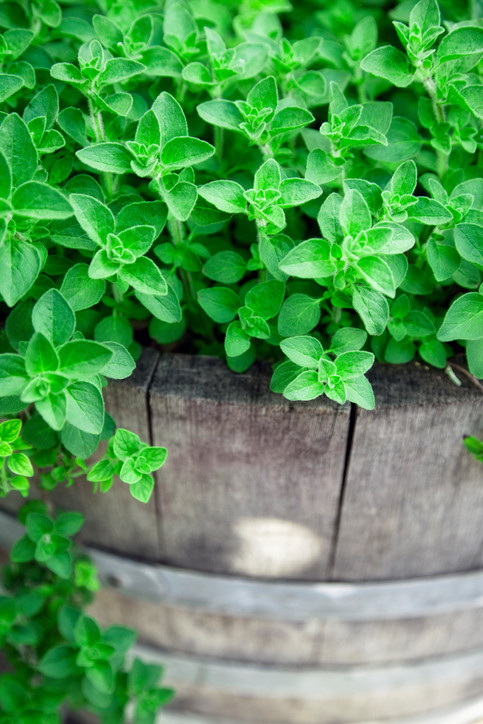
Growing tips:
Oregano makes a wonderful companion plant for virtually any vegetable and can be planted in your veggie garden without taking over.
Be sure to plant in full sun in well-draining soil. Trim frequently to encourage full growth.
Harvesting:
Harvest just as flower buds form to get the richest flavor.
Cut back to just above a cluster of leaves with sharp scissors or shears. Tie bundles together and hang to dry in a dark, dry spot.
Be sure to wrap the bundles loosely in a perforated paper bag to prevent dust collection and leaf droppings as the stalks dry.
Uses:
- Oregano is one of the most versatile cooking herbs and is essential to have on hand for any sauces or homemade pizza.
- Plant oregano as a border along vegetable gardens – particularly cabbage family crops – to attract pollinators and help healthy plant growth.
- Here are some more reasons you should grow oregano.
4. Chives
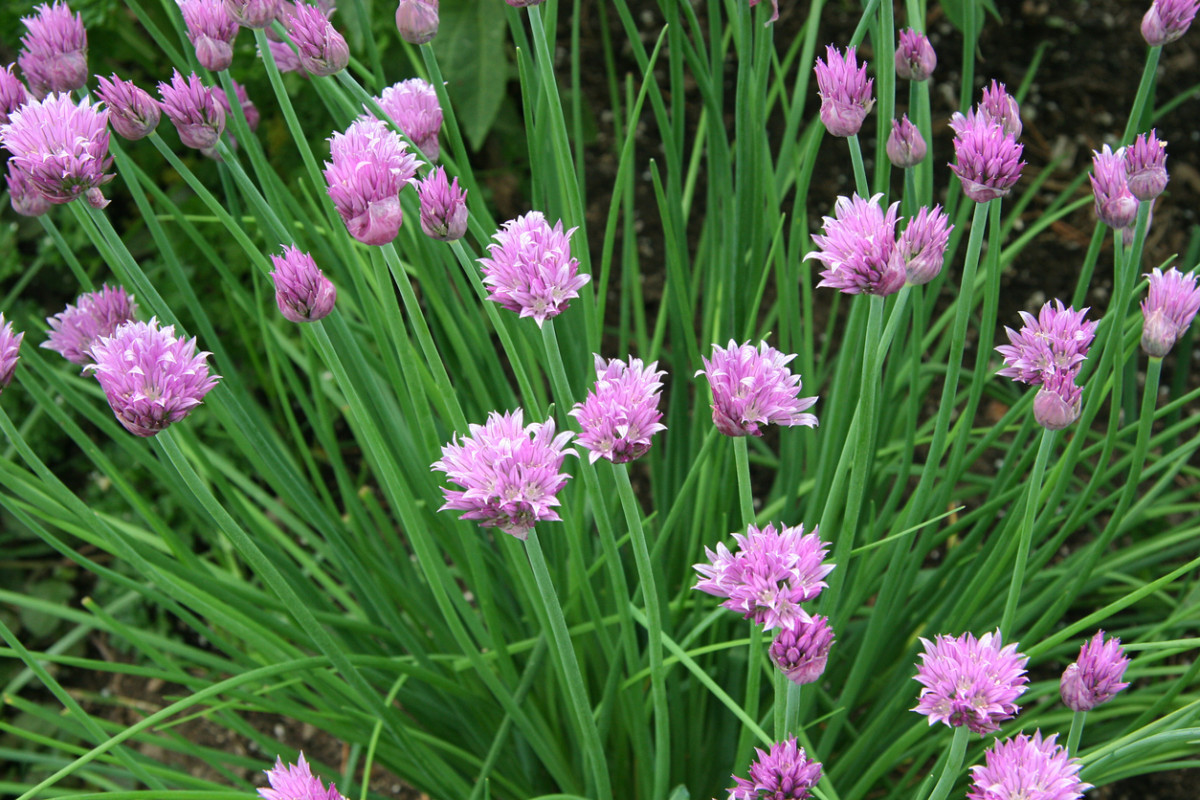
Growing tips:
Before planting, keep in mind that chives will spread quickly if left to seed.
Plant in soil that is rich, fertile, moist and well-draining in an area that receives full sun.
You may need to work in some organic material such as compost to amend the soil.
Harvesting:
Harvest 60 days after seeding. Chop leaves all the way back, leaving the plant 1-2 inches above the soil.
Freeze chives in an airtight bag or use fresh. Harvest 3-4 times in the first year and monthly in the subsequent growing seasons.
Uses:
- Sprinkle fresh chives on a baked potato.
- Add to omelettes or other egg dishes.
- Use as a fragrant garnish for fish.
- Here are some more uses for all of the chives you grow.
5. Rosemary
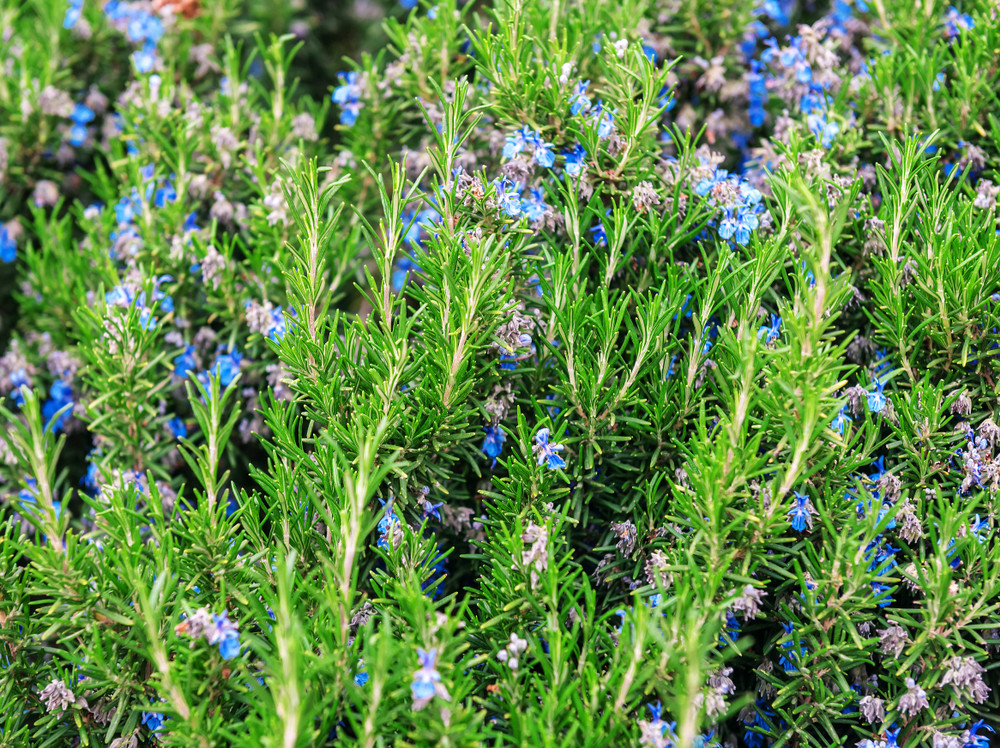
Growing tips:
Rosemary is incredibly hardy but does best in well-drained, sandy soil in full sun.
Make sure that you give your rosemary plants lots of room to spread their roots as they will quickly grow to be about 4’ tall and 4’ wide.
Prune regularly and water deeply but don’t keep the soil too wet.
Harvesting:
Trim rosemary back weekly once established and use the fresh clippings right away. Trimming 2 or 3 inches at a time will actually help ensure healthy new growth and contribute to a full plant.
If you wish to dry this herb, wait until it just starts to bloom and use the same lavender drying method listed above.
Uses:
- Rosemary infused oil is delicious when drizzled over potatoes or roasted veggies. Simply add a few stalks to your oil bottle and let it sit.
- Use fresh rosemary to make tea and help boost your cognitive performance and focus.
- Rosemary has so many incredible uses. Here are some more brilliant ways to use this fragrant herb.
6. Sage
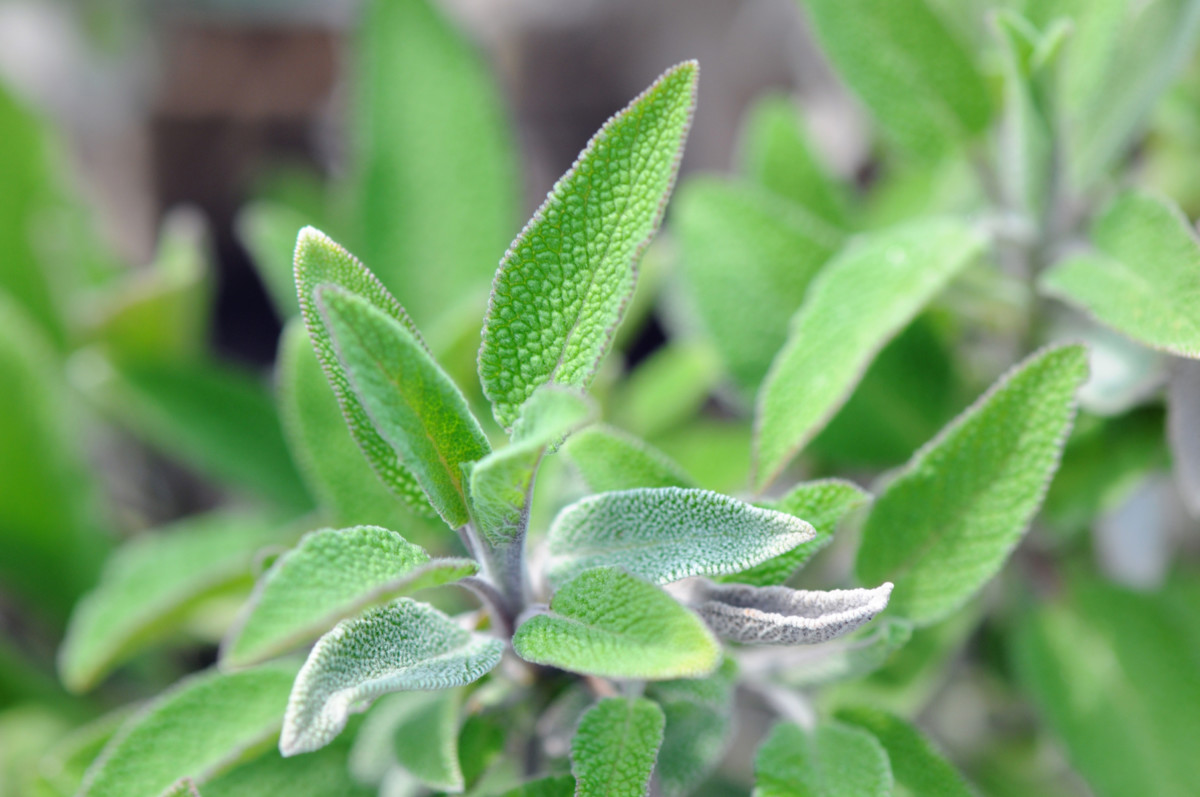
Growing tips:
Sage is most successful when sown from a young plant in full sun with well-draining soil. Keep the soil moist but don’t allow water to sit.
Prune back the thick, woody stems every spring to increase production and flavor.
Harvesting:
Harvest lightly in the first growing season by clipping off a few inches of the plant right above the spot where the leaves meet. Layout leaves on a flat surface to dry and crumble them as needed for seasoning.
Uses:
- Sage brings great flavor to any meat dish, especially poultry.
- The leaves and branches are often used in festive activities such as wreath and potpourri-making where they provide wonderful fragrance, texture, and color.
- Use sage leaves to smudge your home to purify and cleanse the air while also killing bacteria. Here’s why you should try smudging and how to do it, and here’s how to make your own sage smudge sticks.
- Here are some more brilliant ways to use sage.
7. Lemon Balm
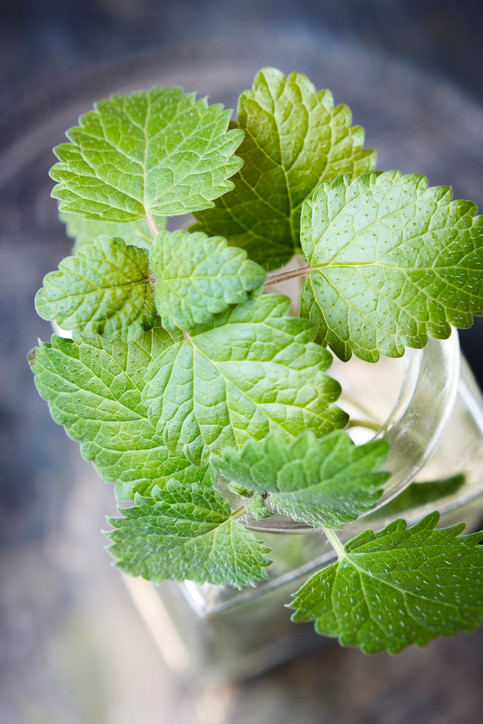
Growing tips:
Be very cautious about where you plant lemon balm, as it can quickly become invasive once established. It may be a good idea to plant it in a raised container by itself to prevent unwanted spread.
Lemon balm is incredibly hardy and will flourish in almost any conditions.
Harvesting:
Since it is such a fast grower, you don’t have to worry about over-harvesting lemon balm.
Once the plant has started to grow, simply pinch off as many leaves as you need. You can also usually get a least two full harvests each year where you cut the whole plant down leaving about 2 inches above the soil.
Hang and dry upside down in a dark place.
Uses:
- Freeze fresh lemon balm in ice cubes to use in refreshing summer beverages.
- Try lemon balm tea. Place a handful of leaves and a cup of water on the stove and bring to a boil. Lower the heat and let simmer for 5 minutes then strain out the leaves. Add honey, if desired.
- Use it to make tinctures and balms for various ailments. Lemon balm is known to have antiviral and anti-stress properties.
- Here are some more ways to use all of the lemon balm you harvest.
8. Roman Chamomile
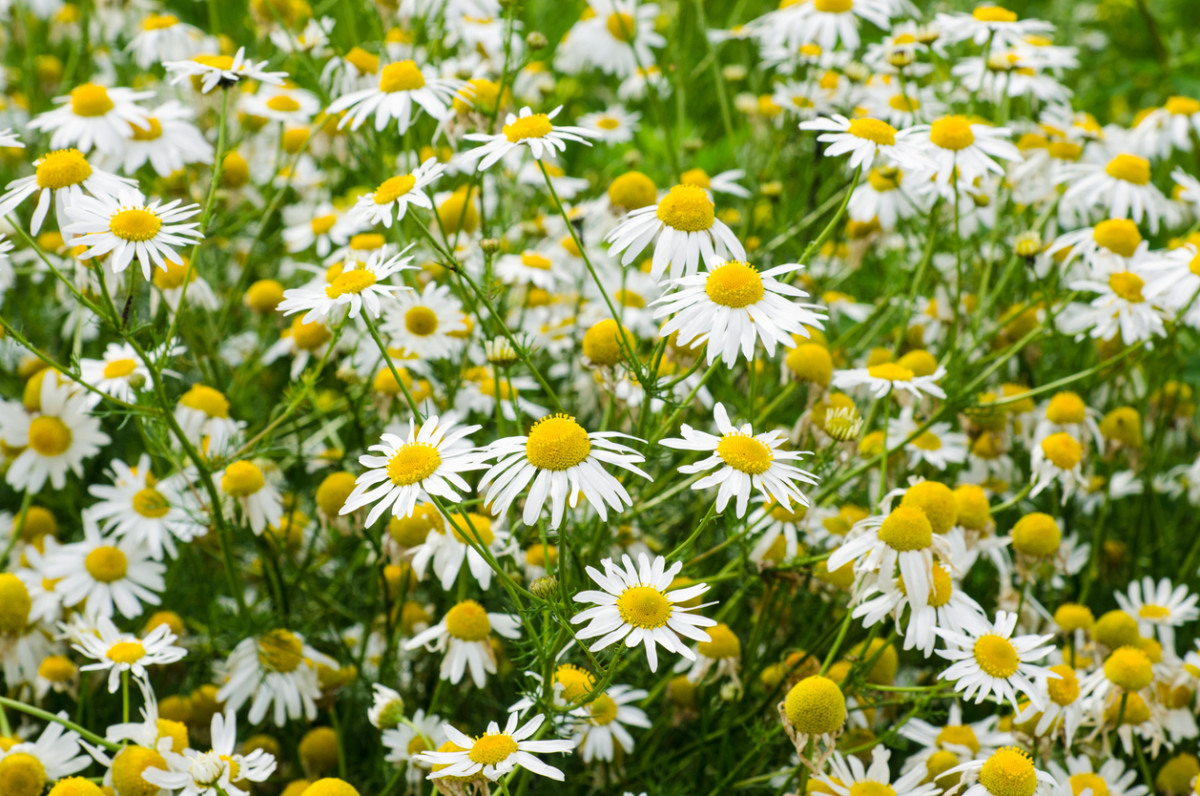
Growing tips:
Chamomile is not only a useful addition to your perennial herb garden but a colorful one as well. Its cheery white and yellow flowers make it a wonderful choice to break up traditional green herbs.
Chamomile does best in cool conditions in full sun to part shade with dry soil. It is incredibly hardy once established and only needs to be watered in prolonged periods of drought.
Harvesting:
Unlike other herbs, you will mainly focus on harvesting the chamomile flower instead of the leaves. When the flower petals are white and the centers are a vibrant yellow, pluck the heads from the stems. You may find it easier to use scissors or shears.
Store blossoms in a large paper bag to dry for at least two weeks.
Uses:
- Add a handful of crushed flowers to a cup of water on the stove and bring to a boil. Let simmer for 5 minutes and strain out chamomile. Add honey and drink before bed for a relaxing herbal remedy that can help banish insomnia.
9. Thyme
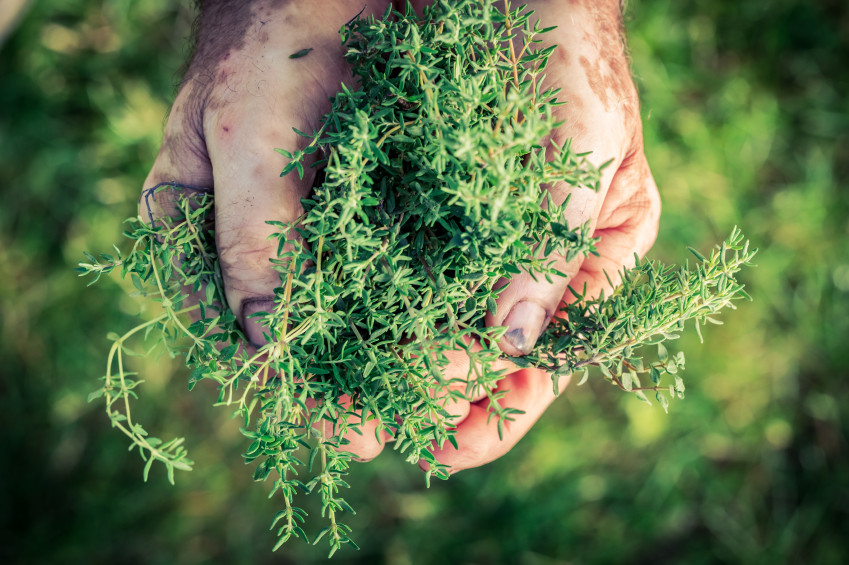
Growing tips:
As with most herbs, less is more when it comes to caring for thyme.
It thrives in hot conditions with full sun and all it needs is thorough watering when the soil is dry to flourish.
It is often tricky to start from seed so it is best to plant a small thyme plant for optimal results.
(You can buy a live thyme plant on Amazon – but it might be best to buy from a local garden center.)
Harvesting:
Thyme sprigs can be harvested and used fresh just before the plant flowers or anytime throughout the growing season. It can also be dried or frozen in an airtight container for later use.
Regular pruning encourages more growth and a rounded shape. Leave at least 5 inches of growth after a mass harvest.
Uses:
- Thyme pairs extremely well with mushrooms, eggplant, tomatoes, fish, chicken, and roast potatoes in various savory dishes.
- This thyme infused spray is great for the scalp and fixing a dry scalp while promoting healthy hair growth.
- Here are some more brilliant ways to use all the thyme you harvest.
10. Mint
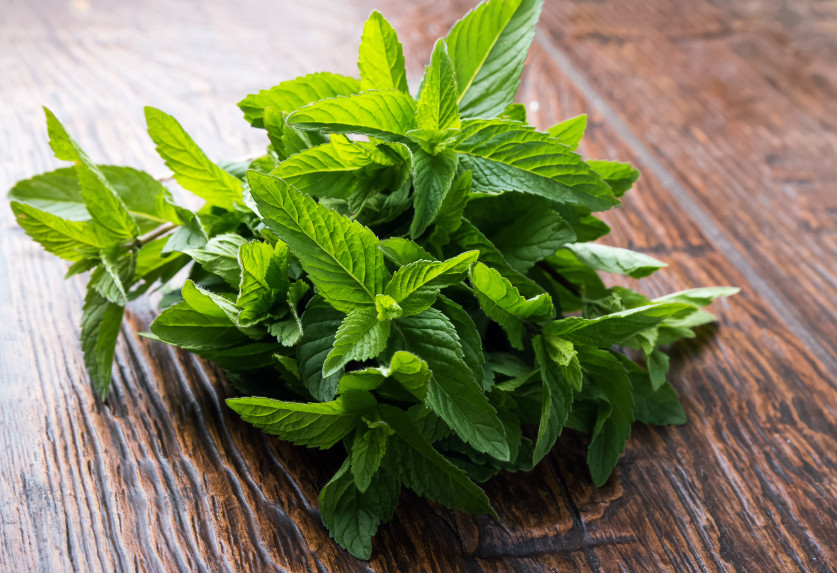
Growing tips:
There are many varieties of mint so it is important to do your research and choose the one that sounds most appealing for your garden and your taste buds.
It is best to start established mint plants (such as one of these) instead of seeds. This is a vigorous perennial and will often spread to fill any available space.
Consider planting in a container or a separate herb garden to contain its growth.
Harvesting:
Pick leaves as you need them or cut down to one inch above the soil right before flowering.
Uses:
- Mint is incredibly versatile and can be added to just about any sweet or savory dish for a unique flavor boost.
- Mix in fresh mint leaves with berries and Greek yogurt.
- Use in tea or freeze in ice cubes for a refreshing drink.
- Add to salads with a light vinaigrette dressing.
- Here’s 21 great ways to use mint leaves.
Best Live Perennial Herb Plants On Amazon
Pin This To Save For Later
